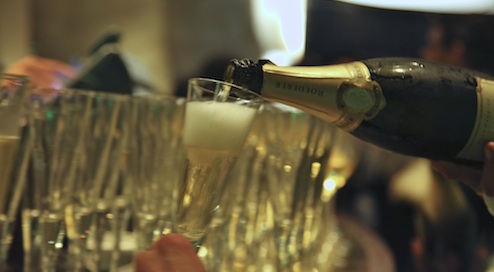
I had the opportunity recently to evaluate fifty wine lists of the top restaurants in Hong Kong and Macau. The markups on wine varies from double the wholesale price to three or four times the wholesale purchase price. Many of the top hotels follow the latter pricing scheme while a handful of enlightened hotels and restaurants choose to encourage wine consumption by having reasonable mark-up. I am often asked in Hong Kong by both visitors and locals, “With no sales tax and no wine duty, why are restaurant wine prices in Hong Kong so high?
I can clearly see both sides of the argument: Consumers are more and more aware of retail wine prices, and in any given local supermarket or convenience store, there are quaffable wines being sold at under HK$50. It’s not surprising that they would wonder why these similar bargains cannot be found in restaurants and bars. The competition for the fine wine market in Hong Kong is fierce and producers frequently have sales and promotions which can leave them with less than a 20% margin. One would assume that after two and a half years as a wine duty free port, these competitive prices on the import, wholesale and retail front would trickle down to consumers. Unfortunately, after reviewing numerous wine lists from some of the top establishments, I can see that this has not occurred.
There are numerous explanations that are offered among the F&B professionals about why this high pricing exists. The most frequently offered explanations include: High rental and overhead costs, pressure on overall F&B revenue from high food price hikes in recent years, beverage revenues facing pressure after substantial investments were made to augment the wine list and overall disappointment in wine sales despite marketing efforts. There is an additional cultural issue which plagues many major Asian cities whose wine culture has blossomed over the past few decades: The BYOW (bring your own wine) culture.
Twenty years ago when most Chinese restaurants did not have wine lists, it was common among the small wine loving community to bring their wines (often wine glasses and cork screws as well). Even when five start hotels and fine dining restaurant proliferated, the custom in top Chinese restaurants was to waive corkage. To prevent losing customers, especially their regular customers who were big spenders, it became common practice even in five-star hotels to waive corkage to their select VIP customers. This list extended quickly as word spread and it was rare for wine enthusiasts who frequent a restaurant to pay corkage. This culture arose during a period when restaurant lists were so paltry that there was little to choose from and nothing that a wine connoisseur would enjoy. Despite the huge change in the restaurant scene from twenty years ago, the culture is still ingrained, especially among those who grew up in Hong Kong, to bring their own wines.
This habit benefits the guests who can enjoy their own wines, but it is detrimental long-term in growing a serious wine culture in the restaurant and hotel business. What is the point of investing in a large wine list and cellar or a great sommelier when all the loyal regulars bring their own wine? Although it is difficult to change what is already ingrained in the dining tradition of cities like Hong Kong, Taipei and Seoul, there is a solution: Restaurants and hotels should try harder to provide the unique, different and innovative wine list rather than just stocking up on wines we already have in our cellar! Many wine lovers would welcome the opportunity to explore outside of their comfort zone and try wines from regions they are less familiar with or high quality producers they yet to hear about. It is the challenge facing the F&B industry in Asia right now – how to get wine lovers to buy from a restaurant wine list rather than bringing their own wine. Of course one solution is the make wine prices reasonable, another is to create a unique and different wine list that gives a nod to classic regions like Bordeaux, but concentrates on giving a platform to innovative boutique producers from around the world.
For the moment, most of the wine lists around town make me want to yawn. They are all peddling the same wares, the only difference is the price. There are exceptions, but it is unfortunate that these are just a small handful rather than the majority. If you want to enjoy some great wines at a restaurant, do your homework before you make the reservation: A single 750ml bottle of Cheval Blanc is HK$38,000 at Gaddi’s (Peninsula Hotel) versus HK$23,500 at L’Atelier Robuchon at the Landmark and only HK$14,000 at Cepage restaurant in Wanchai. The difference in the high to low price is HK$24,000! Even for the extremely popular Cloudy Bay Sauvignon Blanc, the prices range from HK$950 at Nicholini (Conrad Hotel) to HK$580 at the Sheraton Oyster & Wine Bar.
Reprinted with permission from the South China Morning Post









